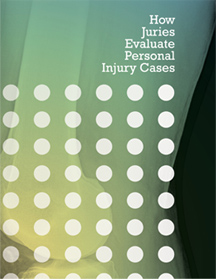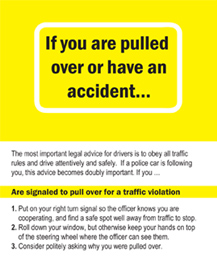Checklist: deposition of property owner in stairway slip and fall accident lawsuit
A deposition is a formal interview, in which one party to a lawsuit questions the other party, in an effort to learn everything that party knows about the events (e.g., the slip and fall) giving rise to the suit. The person answering the questions is sworn to tell the truth, just as if he or she were testifying in court; a court reporter is present to record the testimony.
Below is a checklist of topics that might be covered that might be covered in the deposition of a property owner in a personal injury lawsuit involving a slip and fall accident on a stairway. The property owner is referred to as the “defendant”; the person injured in the slip and fall accident is referred to as the “plaintiff.” This checklist could also be used to depose a representative of the property owner (e.g., the property manager) or a witness to the slip and fall. With slight modifications, it could be used in any slip and fall lawsuit, and is not limited solely to stairway accidents.
1. Location of the slip and fall accident
(a) Description of the premises
(b) Part or location of the premises involved
(c) Use of the premises
(d) Use of the area where the slip and fall accident occurred
(e) Location of the stairway (interior, exterior)
(f) Plaintiff’s direction of movement
2. Description of the stairway where the slip and fall accident occurred
(a) Number of steps
(b) Number of landings
(c) Type of steps, description of steps
(d) Surface of steps
(e) Covering on the stairway
(f) Condition of the stairway
3. Description of the handrail
(a) Present or absent
(b) Length, height, and diameter
(c) Material or composition
(d) Covering or surface
(e) Condition
(f) Age
4. Proximate cause of the slip and fall accident
(a) Foreign object (substance, amount, color, and visibility)
(b) Any surface irregularity
(c) Any defective condition
(d) Any design flaw
(e) Any moisture/slippery conditions
(f) Any loose or worn coverings
(g) Handrail absent or defective
(h) Kind of lighting (natural or artificial)
(i) Lighting absent or defective
(j) Limitations on visibility
(k) Any obstructions or distractions present
5. Warnings evident or given
(a) Nature of warning given
(b) Visibility of warning
(c) Conspicuousness of warning
(d) Description of warning
6. Plaintiff’s conduct
(a) Details of arrival on premises
(b) Status (invitee, social guest, business guest, trespasser)
7. Defendant’s conduct
(a) Awareness or knowledge of problem or defect
(b) Knowledge or awareness of plaintiff’s presence on premises
(c) Control of premises
(d) Similar occurrences
(e) Protective measures against occurrence
(f) Repairs and maintenance
(g) Tests and inspections
(h) Conformance with governmental building codes
8. Witnesses to plaintiff’s or defendant’s conduct
(a) Name, address, telephone number of witness
(b) If the above is unknown, physical description of witness
(c) Witness’ physical proximity to plaintiff, defendant, or area of premises where slip and fall accident occurred
9. Witness statements to plaintiff or defendant
(a) Content
(b) Form (oral, written or recorded)
(c) When they were made?
(d) By whom?
(e) Custodian of written or recorded statements



